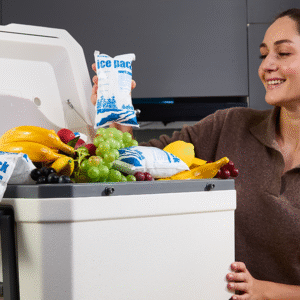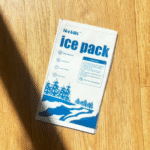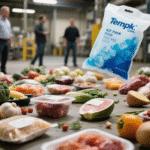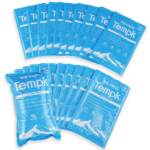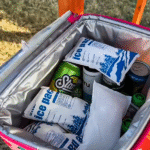How to Use a 48 Hour Dry Ice Pack for Reliable Frozen Shipping?
Introdução: When you need to keep perishable items frozen for long journeys, um 48 bloco de gelo seco por hora becomes your best ally. Gelo seco, ou dióxido de carbono sólido, sublimates at extremely low temperatures (about −78.5 °C) and can maintain frozen conditions for up to two days when used correctly. With proper insulation and packing techniques, this high performance coolant can ensure that your frozen goods arrive in perfect condition. This guide explains how to size, pack and monitor your 48 hour dry ice pack, using clear data points like the recommended 1:1 ratio of dry ice weight to product weight and the rule of thumb 5–10 lb sublimation rate per day.
Sizing fundamentals: Understand the dry ice weight formula and learn how to adjust it for seasonal and route variations using long tail keywords like dry ice weight to product weight ratio e 48 hour dry ice pack sizing.
Packaging best practices: Discover how to position the dry ice in your container, choose insulation and manage void space. We’ll explore 48 hour dry ice pack placement e sublimation rate by packaging layout in detail.
Segurança e conformidade: Learn about UN1845 regulations, labeling requirements and how to handle dry ice safely. Keywords include dry ice shipping regulations e vented packaging guidelines.
Industry use cases: See how pharmaceuticals, seafood exporters and meal kit providers leverage 48 hour dry ice packs for reliable frozen delivery. We’ll mention biotechnology dry ice packs e frozen food shipping strategies.
2025 inovações e tendências de mercado: Stay informed on smart sensors, eco friendly materials and other cold chain innovations shaping the future.
O que faz um 48 Hour Dry Ice Pack Different from Other Cooling Options?
Resposta rápida: A 48 hour dry ice pack uses solid carbon dioxide to keep shipments frozen much longer than gel packs or water ice. Dry ice sublimates at around −109.3 °F (−78,5°C), turning directly from a solid into a gas and maintaining colder temperatures over extended periods. This process releases no liquid water, preventing leaks and preserving product quality, and it provides 48 hours of cooling when correctly sized and insulated. Pacotes de gel, por contraste, congelar em 0 °C and offer only 24–36 hours of cooling, making them better suited for chilled but not frozen goods. Because dry ice can maintain subzero temperatures, it is ideal for shipping frozen foods, biologics and pharmaceuticals.
Explicação detalhada
When comparing a 48 hour dry ice pack to other cold chain options, it’s essential to consider temperature stability, duration and safety. Sublimação com gelo seco—the process by which solid carbon dioxide transitions directly into gas—means there is no residual meltwater to soak your product. Ao contrário do gelo molhado, que derrete ao redor 0 °C and can flood packaging, dry ice maintains a constant subzero environment until it fully sublimates. According to UPS’s shipping guide, esperar 5–10 libras de gelo seco para sublimar cada 24 hours depending on insulation quality. This rate allows you to predict how much dry ice is needed for 48 horas de resfriamento, making it more precise than gel packs that have variable melting rates. Gel packs are less expensive and reusable, but they cannot sustain the extremely cold temperatures needed for frozen goods beyond 24–36 hours. Por isso, a 48 hour dry ice pack fills the gap between short term gel cooling and expensive active refrigeration, especially for transit times of one to two days.
Advantages and disadvantages
| Método de resfriamento | Duração típica | Faixa de temperatura | Implicações práticas |
| 48bloco de gelo seco por hora | ~48 hours when sized appropriately | Cerca de -78,5 °C (−109,3 °F) para 0 °C | Ideal for frozen shipments; zero meltwater; requer embalagem ventilada; regulated as UN1845 |
| Pacote de gelo em gel | 24–36 horas | 0 °C a 8 °C | Suited for chilled goods; reutilizável; less cold; no hazardous shipping restrictions |
| Reusable refrigerant blocks | 36–72 horas | −20 °C a 8 °C | Flexível e reutilizável; moderate cost; may not reach the extreme cold needed for certain biologics |
| Refrigeração ativa (refrigerated truck/container) | 24 hours to unlimited | Ajustável (refrigerado ou congelado) | High cost and complex logistics; used for high value or very sensitive shipments |
Dicas e conselhos práticos
Choose dry ice when you need to keep goods below freezing for up to two days. Gel packs or water ice cannot maintain such low temperatures and will melt, potentially damaging products.
Ensure your packaging allows gas to escape. Dry ice sublimation creates carbon dioxide gas, so containers must have vent holes to prevent pressure build up.
Use luvas e óculos isolados. Dry ice can burn skin upon contact.
Combine with gel packs for longer transit or mixed temperature zones. UPS recommends using frozen gel packs along with dry ice when transit extends beyond one to two days or when product temperature tolerance varies.
Exemplo de caso: A biotech firm shipping temperature sensitive enzymes switched from gel packs to 48 hour dry ice packs for two day international deliveries. The new packaging maintained enzyme stability at −20 °C throughout transit and reduced spoilage by 35%. The firm also used vented insulated boxes and labeled the shipments as UN1845, ensuring compliance with airline restrictions and smooth customs clearance.
How Do You Calculate the Right Amount of Dry Ice for 48 Hour Shipping?
Resposta rápida: Comece com um 1:1 ratio between the weight of your frozen product and the weight of dry ice. Por exemplo, envio 8 lb of frozen seafood requires roughly 8 lb of dry ice for 48 hour performance. Then adjust for seasonal conditions, transit complexity and insulation quality using simple multipliers to fine tune the quantity.
Step by step explanation
The goal of a 48 hour dry ice pack is to provide enough sublimating dry ice to keep your product frozen until it reaches its destination. A simple baseline is to use one pound of dry ice per pound of product. This baseline assumes adequate insulation (por exemplo, 1 inch or more of expanded polystyrene foam) and normal ambient temperatures. No entanto, real world conditions often require adjustments. The dry ice sizing formula below accounts for three variables:
Seasonal adjustment: Add 25–35% more dry ice in hot weather and reduce by 10–15% in cold weather. High outdoor temperatures accelerate sublimation.
Route and handling factor: Multi handoff routes or shipments through hubs may require 10–15% extra dry ice to accommodate potential delays.
Eficiência de isolamento: Upgrading from standard foam to vacuum insulated panels (VIP) can reduce dry ice needs by 10–25%.
Dry ice sizing formula:
Gelo seco necessário (Libra) = Peso do produto (Libra) × [1.0 + seasonal factor + route factor − insulation factor]
Por exemplo, if you are shipping 6 lb of pastries in summer (seasonal factor = 0.35) via a multi stop route (route factor = 0.10) and you upgrade insulation (fator de isolamento = 0.20), the required dry ice is:
6 libra × [1.0 + 0.35 + 0.10 - 0.20] = 6 libra × 1.25 = 7.5 Libra (rounded up to 8 Libra)
Tempk’s case study shows that a bakery shipping 6 lb of pastries in the summer added 2 lb of extra dry ice and improved insulation to maintain frozen conditions for 52 horas.
Ratio and size table
| Peso do produto (Libra) | Baseline dry ice for 24 h (Libra) | Baseline dry ice for 48 h (Libra) | Explicação |
| 2 Libra | 2–4 libras | 4–6 lb | Comece com um 1:1 razão; dobrar para 48 horas; adjust up to 6 lb in summer. |
| 5 Libra | 5 Libra | 10 Libra | Multiplying by two ensures continuous cooling for two days; adicionar 25% para rotas quentes. |
| 10 Libra | 10 Libra | 20 Libra | Para grandes remessas, ensure the container has at least 1–2 inch foam insulation to minimize sublimation. |
| 20 Libra | 20 Libra | 40 Libra | Heavy loads require sturdy containers and may exceed airline limits; consider splitting into smaller packages. |
Dicas e conselhos práticos
Use data loggers during trial shipments. Before launching large scale shipments, run test shipments with temperature loggers to verify that your dry ice amount keeps the product below its target temperature for 48 horas. Bench testing and lane pilot programs help identify hot spots and refine your formula【794360261561442†L229-L249】.
Account for transit delays. Carriers recommend including enough dry ice for an extra 24 hours to cover unexpected delays.
Avoid oversizing when using premium insulation. Vacuum insulated panels or high density EPS can reduce dry ice requirements by up to 25%, economizando peso e custo.
Remember carrier weight limits. Airlines often restrict passengers to 2.5 kg (5.5 Libra) of dry ice per bag; commercial shipments have higher allowances but may incur hazardous materials surcharges. Consult your carrier.
Caso do mundo real: A pharmaceutical company shipping biologic vials used the sizing formula to calculate 18 lb de gelo seco para 15 lb of product in winter (−10% seasonal factor) and used vacuum panels (−20% insulation factor). The equation gave 15 libra × [1.0 - 0.10 - 0.20] = 10.5 Libra, rounded up to 12 Libra. The company added a 3 lb buffer to cover transit delays, achieving stable temperatures for 54 horas.
How Do You Properly Pack and Handle a 48 Pacote de gelo seco por hora?
Resposta rápida: To maximize performance and safety, place dry ice sheets or blocks on top of pre frozen products inside a foam or insulated container, leave enough venting for carbon dioxide gas to escape, and never let the dry ice touch the food directly. Use gloves and goggles when handling dry ice, and clearly label packages as containing UN1845 dry ice.
Packing instructions
The way you assemble your shipping box greatly affects how long a 48 hour dry ice pack will last. Here’s a typical pack out:
Pré-condicione tudo: Freeze your product to below –18 °C and pre chill the container, pacotes de gel (if any) and dry ice sheets before packing. Warm items will accelerate sublimation.
Selecione isolamento: Use a high density expanded polystyrene (EPS) foam container at least 1 inch thick or vacuum insulated panels for high value shipments. UPS states that lower density foam accelerates sublimation.
Arrange products and dry ice: Place the frozen goods at the bottom. Add insulation or corrugated inserts if needed to prevent direct contact. Then position the dry ice on top of the product to ensure cold air sinks and envelops the items. Hybrid layouts that distribute dry ice along the top and sides can extend performance to 48–72 hours.
Preencha o espaço vazio: Use crumpled paper or foam inserts to minimize empty space. Too much air accelerates sublimation and allows items to shift. Void control improves performance by 5–15%.
Seal and vent: Close the foam lid and place the foam container inside a corrugated shipping box. Do not seal the inner foam container airtight; leave small vent holes or loosen the lid to allow carbon dioxide gas to escape. Label the outer box “Dry Ice (UN1845)” with net weight and attach a Class 9 Etiqueta de perigo.
Sublimation rate by pack out layout
| Layout type | Estimated sublimation rate | Performance duration | Significado prático |
| Posicionamento superior | 5–10 lb/dia | 24–36 horas | Dry ice sits on top of product, providing basic cooling. Suitable for short 24 remessas de hora. |
| Surround placement | 3–7 lb/day | 36–60 horas | Dry ice wraps around sides and top, creating better cold retention but uses more ice. |
| Híbrido (principal + lado) | 2–5 lb/day | 48–72 horas | Combines top and side placement; slower sublimation due to even temperature distribution; extends duration to 48+ horas. |
Dicas e conselhos práticos
Nunca guarde gelo seco em recipientes herméticos. Carbon dioxide gas from sublimation builds pressure and can rupture containers.
Protect yourself and the contents. Use luvas e óculos de proteção isolados ao manusear gelo seco, and avoid letting dry ice come into contact with food or pharmaceuticals to prevent freezer burn.
Use compatible containers. Avoid glass containers that can crack and use durable corrugated boxes with proper insulation.
Label shipments correctly. Mark packages with the UN1845 number, o peso líquido do gelo seco, e uma aula 9 hazard label to meet carrier regulations.
Exemplo de caso: Um exportador de frutos do mar enviando 10 lb of frozen lobster tails to a restaurant used a hybrid layout: the dry ice sheets were wrapped around the sides and on top of the product inside a 2 inch EPS cooler. They included 20 lb de gelo seco (1:1 ratio × 2 para 48 horas) mais 20% buffer and filled gaps with foam peanuts. The package maintained −18 °C for over 48 horas, and the lobsters arrived rock solid. The exporter labeled the box with UN1845 and avoided delays because the carrier recognized the package as compliant.
What Are the Key Safety, Compliance and Regulatory Considerations?
Resposta rápida: O gelo seco é classificado como um material perigoso (UN1845) because it releases carbon dioxide gas and can cause burns. When shipping a 48 hour dry ice pack, you must adhere to handling protocols—use gloves, fornecer ventilação, avoid airtight containers—and comply with labeling requirements set by carriers and the International Air Transport Association (IATA).
Diretrizes de segurança
Use equipamento de proteção adequado. Always handle dry ice with insulated gloves and goggles to avoid frostbite and eye damage.
Fornece ventilação. Nunca sele o gelo seco em um recipiente hermético; the gas must escape to prevent rupture.
Avoid enclosed spaces. Do not store dry ice in unventilated rooms such as car trunks or aircraft cabins because sublimated CO₂ displaces oxygen and poses a suffocation risk. According to the CISA primer, 1 lb de gelo seco produz cerca de 8.3 pés cúbicos de gás CO₂.
Compliance requirements
Rotulagem: Shipments must be marked “Dry Ice” or “Carbon Dioxide, Sólido,” include the UN1845 designation and display a Class 9 Rótulo de materiais perigosos.
Limites de peso: Airlines often restrict passengers to 2.5 kg (5.5 Libra) of dry ice per checked or carry on bag. Commercial carriers like UPS and FedEx allow higher quantities when shipments are properly declared.
Políticas da transportadora: Each carrier has unique guidelines. UPS requires vented packaging and proper classification, while FedEx’s cold shipping solutions may provide special packaging for 48–96 hour shipments (2 °C a 8 °C) or PharmaTherm boxes for up to 120 horas.
Regulatory references: Nos EUA, seguir 49 CFR §173.217 for dry ice packaging requirements and the International Air Transport Association’s Packing Instruction 954 para remessas aéreas.
Dicas e conselhos práticos
Verifique os regulamentos locais. Some countries require special permits or limit the weight of dry ice per package. Always consult your carrier’s hazardous materials guide.
Document your process. Keep records of packing procedures and employee training to demonstrate compliance in audits.
Monitor carbon dioxide levels. Use CO₂ monitors or indicators in storage and shipping areas to detect gas buildup【794360261561442†L229-L249】.
Training matters. Ensure that everyone handling dry ice—warehouse staff, motoristas, recipients—understands safety protocols and emergency procedures.
Exemplo de caso: A medical laboratory shipping frozen blood samples used 5 lb of dry ice in an insulated container. They neglected to label the package as UN1845, causing a delay when the carrier flagged it for hazardous materials compliance. After training staff on labeling and adding vent holes to packages, shipments moved smoothly, and the lab avoided regulatory penalties.
Which Industries Benefit Most from 48 Pacotes de gelo seco por hora?
Resposta rápida: Industries that require frozen or subzero temperature maintenance for extended periods—including pharmaceuticals, biotecnologia, comida & bebida, meal kit providers and medical diagnostics—benefit enormously from 48 hour dry ice packs. These sectors often ship high value or temperature sensitive goods and need predictable cold chain performance.
Industry applications
Farmacêuticos e biológicos: Many biologic drugs and vaccines must remain frozen or below −20 °C. Dry ice packs provide stable cold temperatures during transit, ensuring product potency. High density insulation and careful sizing can minimize waste; in fact, the ability of dry ice to maintain deep freeze conditions makes it a preferred choice for two day shipments over gel packs.
Biotecnologia e amostras laboratoriais: Research institutions and diagnostic labs ship enzymes, reagents and biological samples that require strict temperature control. Dry ice prevents enzymatic degradation and preserves cell viability. The absence of liquid water also avoids contamination.
Comida e bebida: Frutos do mar congelados, carne, pastries and meal kits rely on dry ice to reach consumers while retaining texture and flavor. Por exemplo, um 1:1 ratio of dry ice to product weight has been shown to keep seafood frozen for 48 horas.
Agriculture and flowers: Growers use dry ice to cool delicate produce like berries or cut flowers for two day transit, especialmente em climas quentes. The ability to add 25–35% more dry ice in summer helps maintain freshness.
E commerce meal kit providers: The rise in home meal delivery services demands reliable cold chain solutions. Dry ice packs ensure kits stay frozen until the subscriber’s delivery window. Many providers now use hybrid layouts with gel packs to manage mixed frozen and chilled components.
Dicas e conselhos práticos
Select the right container for your industry. Pharmaceuticals may require insulated shippers with vacuum panels, while meal kits can use thick EPS foam with additional gel packs. Evaluate cost versus protection.
Test packaging regularly. Before scaling shipments, run controlled tests to ensure that your 48 hour dry ice pack meets regulatory requirements and preserves product quality【794360261561442†L229-L249】.
Plan for return logistics. Consider whether recipients can recycle or reuse insulation and packaging components, particularly for consumer facing sectors.
Exemplo de caso: Uma empresa de kit de refeição enviando 4 lb of pre portioned ingredients used a hybrid pack out: 4 lb of dry ice plus two gel packs in a 1.5 inch EPS cooler. They tested their packaging with temperature loggers and found that the combined coolant maintained −10 °C for 46 horas, after which gel packs maintained 0 °C for an additional 8 horas. Customer complaints of thawed meat dropped by 75%.
How Do You Monitor and Validate a 48 Hour Dry Ice Pack Shipment?
Resposta rápida: Effective monitoring involves using temperature loggers, carbon dioxide sensors and data analytics to validate that your shipment stays within the required temperature range for the entire 48 horas. Bench testing and lane pilot studies help fine tune your packaging and dry ice quantities【794360261561442†L229-L249】.
Monitoring tools
USB and PDF data loggers: Place small devices inside the shipping container to record temperature data throughout transit. Após a entrega, download the data to verify compliance with specifications.
Sensores de IoT: These wireless sensors transmit real time temperature and location data, allowing you to intervene if temperatures rise or shipments are delayed【794360261561442†L229-L249】.
CO₂ detectors: Since dry ice sublimation produces carbon dioxide gas, monitors help ensure safe levels in storage areas and during transit. Alerts can trigger ventilation or safety protocols.
Near Field Communication (NFC) tags: These tags can be scanned with a smartphone at various points along the supply chain, providing quick temperature snapshots and ensuring chain of custody integrity.
Validation process
Bench testing: Set up a mock shipment in a controlled environment using your chosen container, dry ice weight and product. Use temperature loggers and record data for 48 hours to see if the internal temperature stays within the target range【794360261561442†L229-L249】.
Piloto da pista: After bench tests succeed, conduct a small pilot along the actual shipping route. Install data loggers and monitor performance. Adjust the amount of dry ice, insulation or placement based on results.
Routine audits: Once packaging is validated, implement regular audits to ensure consistent performance. Analyze temperature logs and refine your process as seasons and routes change.
Dicas e conselhos práticos
Identify weak points. Pay attention to temperature spikes during loading, sorting or customs delays. Additional insulation or extra dry ice may be needed at those points.
Use software analytics. Modern cold chain platforms can interpret logger data, showing temperature profiles and predictive alerts.
Train staff to handle loggers. Ensure that everyone in the supply chain knows how to place, start and stop loggers correctly.
Exemplo de caso: A biotech company shipping RNA kits used bench tests followed by lane pilots across three climate zones. They discovered that shipments passing through a warm hub in Phoenix experienced temperature spikes above −18 °C for four hours. By adding 15% more dry ice and upgrading to vacuum panels, they reduced spikes and kept shipments within spec.
2025 Cold Chain Innovations and Market Trends for 48 Hour Dry Ice Packs
Visão geral da tendência
The global cold chain is expanding rapidly, impulsionado pelo comércio eletrônico, biologics and meal kit services. According to industry forecasts, the cold chain market may reach US$ 1,6 trilhão por 2033, with strong demand for frozen shipments. Several trends are shaping how 48 Hora seca com pacotes de gelo seco are used in 2025:
Monitoramento inteligente: Advances in IoT sensors and blockchain technology allow real time tracking and tamper proof records of cold chain conditions. These tools help verify that shipments stay within required temperatures and provide data for continuous improvement.
Embalagem sustentável: Manufacturers are developing bio based insulation and recyclable dry ice packs to reduce waste. Innovations include compostable foam liners and reusable phase change materials that complement dry ice.
Hybrid refrigeration systems: Combining passive dry ice cooling with active refrigeration (por exemplo, battery powered cooling units) can extend frozen shipping to 72 horas ou mais. This approach is gaining traction for high value pharmaceuticals and cross continental shipments.
Automação e robótica: Warehouses are increasingly using robotic systems to pack, handle and distribute dry ice shipments, reducing human exposure to extreme cold and improving accuracy.
Cadeia de frio como serviço: Logistics providers offer turnkey solutions with validated packaging, real time monitoring and emergency replenishment services. This reduces complexity for shippers and ensures compliance.
Últimos desenvolvimentos de vista
Sensores inteligentes: Temperature and CO₂ sensors integrated into packaging provide continuous data streams. They alert operators if dry ice is depleting too quickly or if there are risk of CO₂ buildup.
Isolamento ecológico: Companies are experimenting with plant based foams and recycled materials to decrease environmental impact. These materials provide R values similar to traditional foam but are compostable.
Renewable dry ice production: Some dry ice suppliers are using renewable energy and carbon capture technology to produce CO₂ feedstock, reducing the carbon footprint of the dry ice itself.
Insights de mercado
Crescimento do comércio eletrônico: The popularity of direct to consumer meal kits and gourmet frozen foods has surged, creating more demand for reliable 48 hour dry ice pack solutions. Providers differentiate themselves by guaranteeing frozen delivery on arrival.
Pharma and biotech expansion: The pipeline of biologics and gene therapies requires ultra cold shipping. As these products enter commercialization, demand for high performance dry ice packs grows.
Regional cold chain disparity: Emerging economies are investing in cold chain infrastructure; some rely on dry ice because refrigeration networks are limited. This dynamic influences supplier strategies and packaging innovations.
Perguntas frequentes
Q1: How much dry ice do I need to keep 10 lb of frozen meat cold for two days?
A straightforward guideline is to match the weight of your meat with an equal weight of dry ice, so roughly 10 lb of dry ice for a 10 lb package. Add 25–35% more during summer or long routes and ensure your container has at least 1 inch of insulation.
Q2: Can I use a 48 hour dry ice pack with gel packs?
Sim. Combining dry ice with gel packs can extend the cooling duration. Use dry ice for deep freeze in the first 48 hours and gel packs to maintain chilled temperatures thereafter. Place gel packs around or below the product and dry ice on top, ensuring that dry ice does not touch the gel directly.
Q3: Do I need to declare dry ice when shipping?
Absolutamente. Dry ice shipments must be labeled “Dry Ice” or “Carbon Dioxide, Solid” with the UN1845 designation and the net weight of dry ice. Uma aula 9 rótulo de perigo é obrigatório. This applies even for domestic ground shipments.
Q4: O gelo seco é seguro para contato com alimentos?
Avoid direct contact between dry ice and edible goods. The extreme cold can cause freezer burn and alter texture. Use uma divisória (por exemplo, papelão ou espuma) to separate dry ice from food.
Q5: Quanto tempo dura o gelo seco em um refrigerador?
In a typical insulated cooler, gelo seco sublima em 5–10 lb por 24 horas. In a hybrid pack out with good insulation, this can drop to 2–5 lb per day. The actual duration depends on outside temperature, insulation quality and how often you open the container.
Q6: What is the difference between 24 hour and 48 hour dry ice packs?
The difference lies mainly in the quantity of dry ice and the insulation design. A 24 hour dry ice pack contains about half the amount of dry ice and may not use a hybrid layout, while a 48 hour pack doubles the dry ice and improves insulation to sustain freezing temperatures for two days.
Resumo e recomendações
Takeaways -chave: Usando a 48 bloco de gelo seco por hora is an effective way to keep frozen goods safe during extended transport. The core guideline is to match the product weight with an equivalent amount of dry ice and adjust for seasonal or route variables. Proper packing—placing dry ice on top, pre conditioning components, filling void space and ventilating the container—is critical. Safety and compliance must never be overlooked: always wear protective gear and label packages with UN1845. Industries from pharmaceuticals to meal kits rely on these practices to maintain product integrity and customer satisfaction.
PRÓXIMOS PASSOS: Start by performing a trial shipment using the sizing formula provided. Monitor the shipment with data loggers and adjust your dry ice quantity, packaging and insulation based on the results. Make sure to train staff on handling and regulatory requirements, and explore innovations like smart sensors and sustainable insulation to enhance performance. Finalmente, mantenha-se informado sobre 2025 market trends and regulatory updates to keep your cold chain operations competitive.
Sobre Tempk
Tempk is a leading provider of cold chain packaging solutions. Somos especializados em Pacotes de gelo seco, vacuum insulated panels and temperature controlled containers designed for pharmaceuticals, comida, biotechnology and e commerce applications. Our products are engineered using cutting edge materials and undergo rigorous validation to ensure consistent performance. Com décadas de experiência, we support clients by offering consultative sizing services, real time monitoring options and sustainable packaging alternatives. Partner with us to reduce spoilage, comply with regulations and deliver your products safely.






